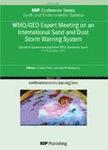版权所有:内蒙古大学图书馆 技术提供:维普资讯• 智图
内蒙古自治区呼和浩特市赛罕区大学西街235号 邮编: 010021

作者机构:NumIberica Cabanillas del Campo - Spain NUMECA International Brussels - Belgium
出 版 物:《IOP Conference Series: Earth and Environmental Science》
年 卷 期:2021年第774卷第1期
摘 要:The objective of this work is to show how advanced optimization tools can be used for hydraulic turbine design, taking the example of a Francis runner design (new or refurbishment project). The public test case considered corresponds to a R&D turbine model of specific speed Ns = 0.5, originally developed at the Hydraulic Machinery Laboratory (LMH) of École Polytechnique Fédérale de Lausanne (EPFL). Firstly, a standard Computational Fluid Dynamics (CFD) process is used to predict performances, in the form of efficiency and cavitation behaviour. It features structured mesh for distributor (stay vane and guide vane), runner and draft tube. Automatic scripts are created to run computations for several guide vane openings and rotation speeds, covering the whole range of operating conditions, and allowing to obtain numerical hill charts of efficiency and minimum pressure to predict the occurrence of cavitation. Secondly, some operating points are purposefully selected for the optimization and objectives are defined to maximize efficiency while constraints are set for preventing cavitation. To continue with, a parametric blade model is defined: 3D blade shape is obtained from blade to blade sections and a stacking law. Sections are defined by camber and thickness. Finally, a Surrogate Based Optimization (SBO) with Evolutionary Algorithm (EA) is used for searching a global optimum. Design of Experiment (DOE) techniques are employed to efficiently define a database. Dynamic monitoring, data-mining and visualization tools are used; including Leave-One-Out (LOO), Analysis of Variance (ANOVA) and Self-Organizing Maps (SOM), with the objective of facilitating surrogate reliability assessment and a comprehensive understanding of key factors of the problem studied. This methodology is tested iteratively with the Francis Runner Hydraulic design: a first optimization is run, analysed and used to define a second optimization that shows increased benefits in particular for Best Effici